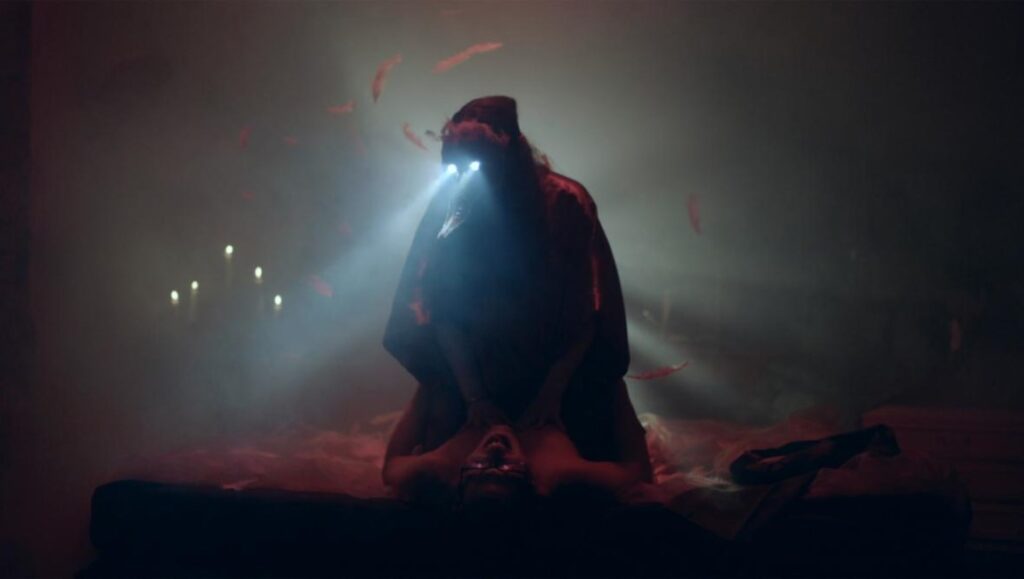Dawn Breaks Behind the Eyes doesn’t exactly add up to much, but it’s a viscerally wild ride of psychedelic visuals and ominous vibes for those willing to take the ride.
Kevin Kopacka’s Dawn Breaks Behind the Eyes is a curious beast, a Peter Strickland-esque pastiche of low-budget ‘70s European horror movies — think Amicus more than Hammer — that switches gears so many times that it’s almost impossible to describe the plot without giving the whole thing away. Having said that, the movie ultimately fractures its own reality to such a degree that there’s less and less plot to synopsize, only psychedelic visuals and strange, ominous vibes. It begins simply enough; unhappily married Margot (Luisa Taraz) and her aggressively disagreeable husband Dieter (Frederik von Lüttichau) are traveling to a remote mansion in the dead of night. They’ve recently inherited it from a wealthy member of Margot’s extended family. Dieter is an emasculated prig, a leech with no money of his own who can’t wait to fix up and sell the place. But Margot feels drawn to it, as if it somehow has a power over her. As the pair investigate the property, Dieter comes across something terrifying in the basement (although the audience doesn’t see whatever it is) while Margot begins seeing spirits, ghostly specters that stir something within her. The mansion is a marvel of set design, an immaculate recreation of an old haunted house complete with cobwebs, ancient-looking fixtures, and willowy wisps of fog that creep about through windows and ominous doorways. The duo is forced to spend the night in the haunted abode, and an unsuccessful attempt at sex leads to a fight between the increasingly harried couple.
It all leads to a shockingly vile act of violence that is suddenly revealed to be part of a film shoot. Margot is actually an actress named Lilith, Dieter a friendly, jovial actor named Klaus. They’re both excited to be working with celebrated director Gregor (Jeff Wilbusch), who has assembled a small crew to film his ambitious project on a tight schedule and even tighter budget. His significant other, Eva (Anna Platen), is also his co-writer and some sort of line producer, and she’s unhappy about the film’s ending. It’s the last night of shooting in the mansion location, so the cast and crew decide to have an impromptu party; as the booze and drugs begin to flow freely, Margot/Lilith sets about seducing Gregor, while Eva grows increasingly angry that her ideas are being dismissed. Indeed, Eva and Gregor’s relationship begins to mirror that of the fictional Margot and Dieter, and it’s here that the already blurred line between fantasy and reality essentially disappears, narrative time looping back and folding in on itself. Eva and Gregor become the amorous spirits spotted by Margot/Lilith in the film-within-the-film, while the drug-fueled crew members engage in all manner of sexual escapades. Cinematographer Lukas Dolgner does a remarkable job capturing the shifting tones, from dark and gothic to brightly colored psychotronic, opaque reds and blues and greens overlapping and merging in a kaleidoscopic freak-out. It’s unclear what this all adds up to, if anything, but it’s a singular experience, moving beyond mere homage to become something weirder and more interesting as it culminates in an apocalyptic fury. It’s a wild ride for those willing to take it, and quite an announcement for director Kopacka.
Published as part of Before We Vanish — June 2022.


Comments are closed.